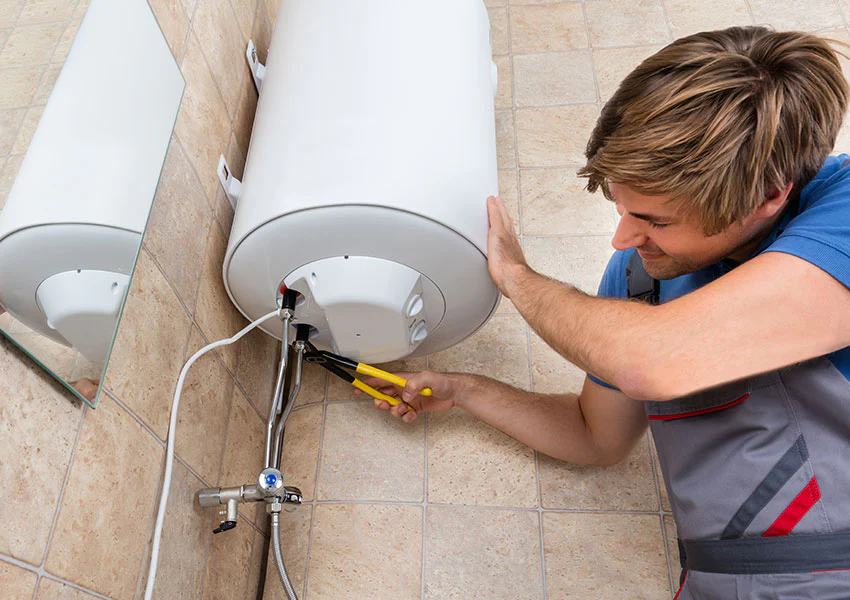We have noticed this article pertaining to What Kind of Maintenance Do Water Heaters Need? directly below on the internet and concluded it made perfect sense to discuss it with you on this site.

Warm water is crucial for day-to-day comfort, whether it's for a revitalizing shower or washing dishes. To guarantee your warm water system runs successfully and lasts longer, normal upkeep is key. This article gives useful suggestions and insights on how to maintain your home's hot water system to stay clear of disturbances and costly repair work.
Intro
Keeping your home's hot water system could appear overwhelming, however with a few straightforward actions, you can ensure it runs smoothly for many years to come. This overview covers everything from recognizing your hot water system to DIY upkeep suggestions and knowing when to employ professional aid.
Significance of Maintaining Your Warm Water System
Regular upkeep not just prolongs the life-span of your hot water system yet additionally ensures it runs efficiently. Ignoring upkeep can result in lowered efficiency, greater energy expenses, and even premature failing of the system.
Signs Your Hot Water System Demands Maintenance
Understanding when your warm water system needs interest can protect against major problems. Watch out for signs such as inconsistent water temperature level, weird noises from the heating unit, or corroded water.
Comprehending Your Warm Water System
Prior to diving into maintenance jobs, it's handy to understand the fundamental parts of your hot water system. Usually, this consists of the hot water heater itself, pipes, anode rods, and temperature controls.
Regular Monthly Maintenance Tasks
Regular regular monthly checks can assist capture small issues before they rise.
Flushing the Water Heater
Flushing your hot water heater gets rid of sediment accumulation, enhancing performance and extending its life.
Monitoring and Changing Anode Rods
Anode poles stop deterioration inside the storage tank. Evaluating and changing them when worn out is critical.
Inspecting and Adjusting Temperature Level Settings
Adjusting the temperature settings makes sure ideal efficiency and safety and security.
DIY Tips for Maintenance
You can do numerous maintenance tasks yourself to maintain your hot water system in top problem.
Looking for Leakages
Frequently inspect pipes and links for leaks, as these can lead to water damage and higher bills.
Examining Stress Alleviation Valves
Testing the stress relief valve ensures it operates appropriately and stops excessive stress buildup.
Shielding Pipes
Protecting hot water pipelines lowers heat loss and can conserve power.
When to Call a Specialist
While DIY maintenance is advantageous, some problems require professional know-how.
Complicated Issues Needing Professional Help
Examples include major leaks, electric troubles, or if your hot water heater is continually underperforming.
Routine Professional Maintenance Conveniences
Specialist upkeep can consist of extensive examinations, tune-ups, and ensuring compliance with safety requirements.
Final thought
Normal maintenance of your home's hot water system is crucial for performance, durability, and cost savings. By following these suggestions and knowing when to seek professional assistance, you can guarantee a trustworthy supply of hot water without unexpected disturbances.
How to Maintain an Instant Hot Water Heater
Before tinkering with your hot water heater, make sure that it’s not powered on. You also have to turn off the main circuit breaker and shut off the main gas line to prevent accidents. Also turn off the water valves connected to your unit to prevent water from flowing into and out of the appliance. 2. When you’re done, you have to detach the purge valves’ caps. These look like the letter “T†and are situated on either side of the water valves. Doing so will release any pressure that has accumulated inside the valves while at the same time avoid hot water from shooting out and burning your skin. 3. When the purge valves’ caps are removed, you have to connect your hosing lines to the valves. Your unit should have come with three hoses but if it didn’t, you can purchase these things from any hardware or home repair shops. You can also get them from retail stores that sell water heating systems. Read the user’s manual and follow it to complete this task properly. When the hosing lines are connected, open the purge port’s valves. 4. You should never use harsh chemical cleaners or solutions when cleaning your unit. Make use of white vinegar instead. It should be undiluted and you’ll probably use about 2 gallons. 5. Now flush your water heater. This task should probably take about 40 minutes. We can’t give you specific directions for this because the procedure is carried out depending on the type, model and brand of your heater. With that being said, refer to the user’s manual. 6. When you’re done draining the unit, you have to turn off the purge port valves again. Remove the hosing lines that you earlier installed on each of the water valves. Put the valve caps (purge port) back in their respective places and be very careful so as not to damage the rubber discs that are found inside these caps. 7. Now that everything’s back in place, check your user’s manual again to find out how to reactivate your water heating system. 8. Once it is working, turn one of your hot water faucets on just to let air pass through the heater’s water supply pipes. Leave the tap on until water flows smoothly out of it. https://www.orrplumbing.com/blog/2014/september/how-to-maintain-an-instant-hot-water-heater/

I found that blog post about Water Heater Maintenance Tips You Can't Afford to Forget when doing a lookup on the internet. If you liked our article kindly remember to share it. Thanks for your time invested reading it.
Call Today